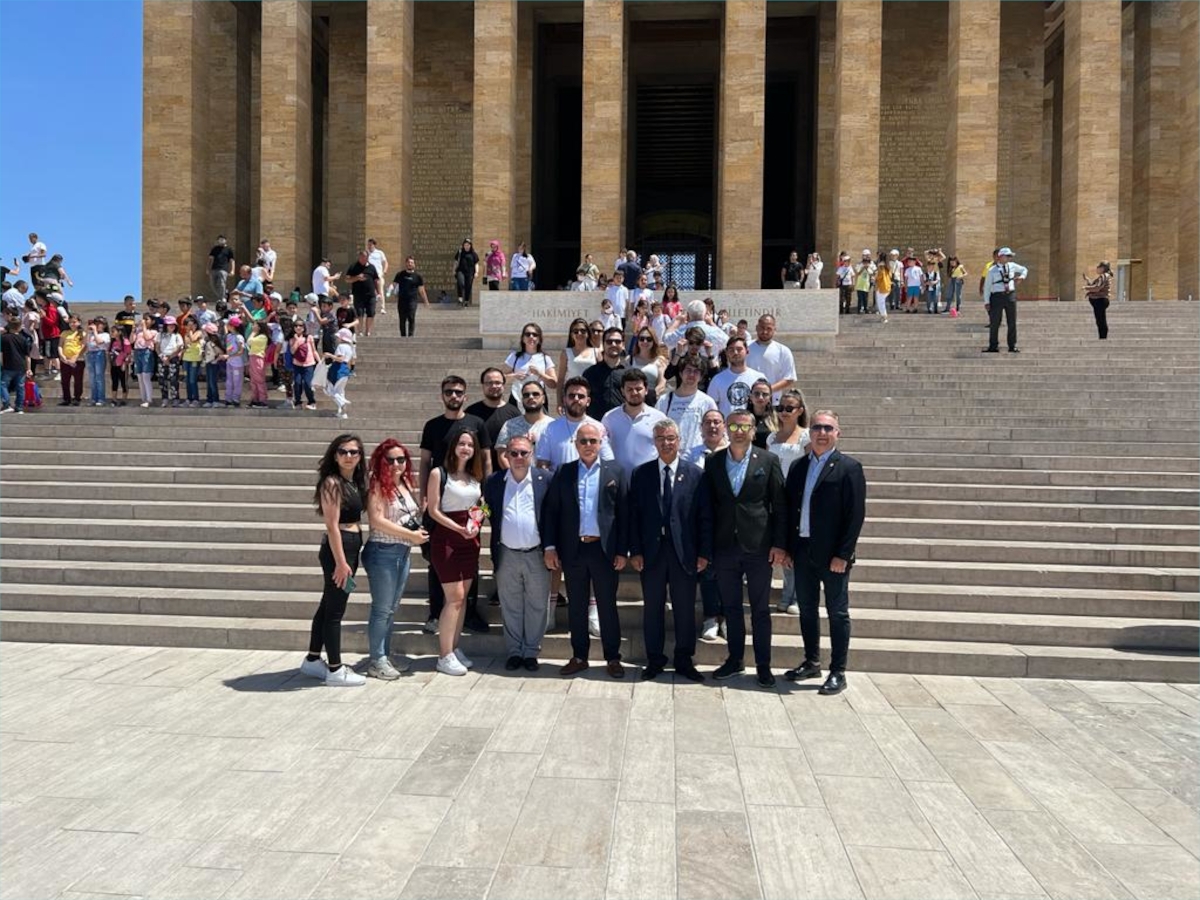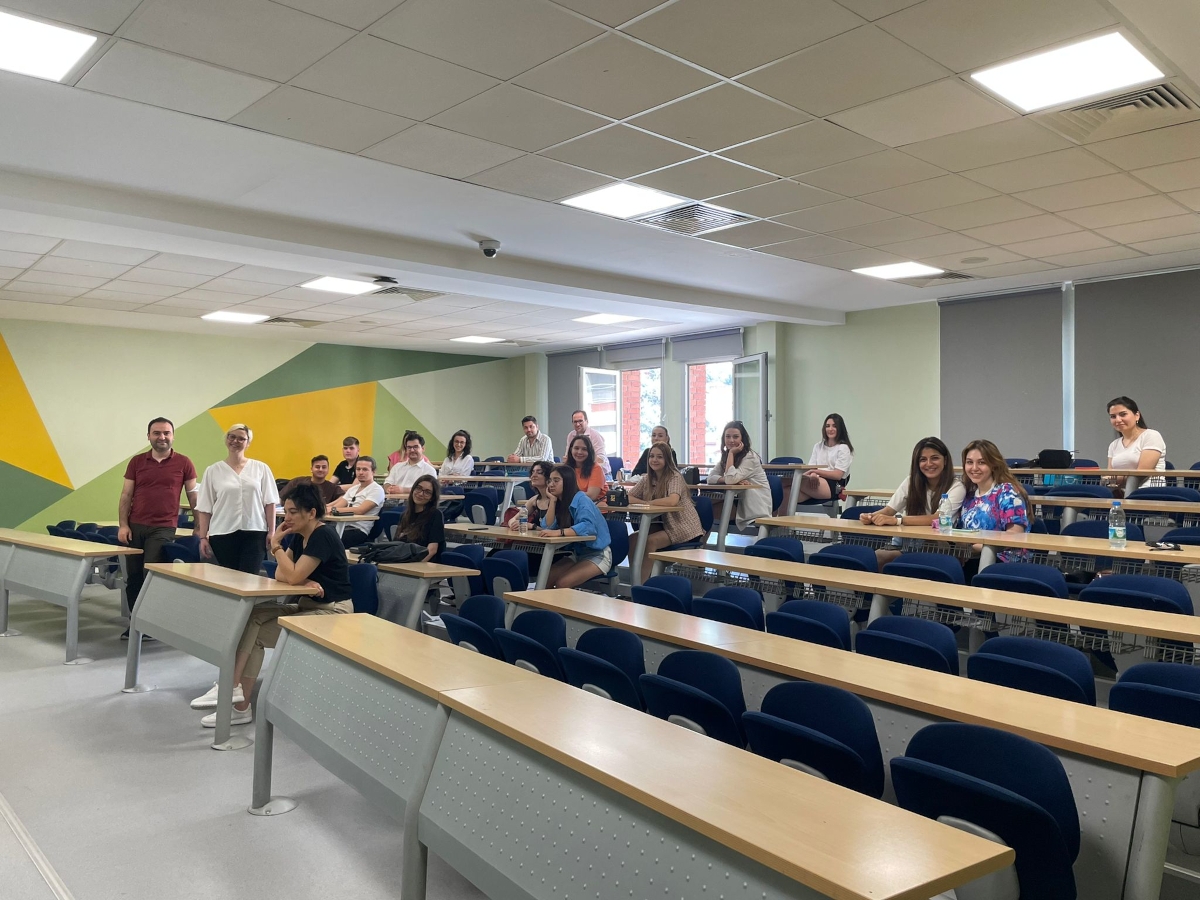
...

...

...
VOCATIONAL SCHOOL OF HEALTH SERVICES
Department of Opticianry| Course Name |
Visual Optics II
|
|
Code
|
Semester
|
Theory
(hour/week) |
Application/Lab
(hour/week) |
Local Credits
|
ECTS
|
|
OPT 201
|
Fall
|
3
|
0
|
3
|
5
|
| Prerequisites |
None
|
|||||
| Course Language |
Turkish
|
|||||
| Course Type |
Required
|
|||||
| Course Level |
Short Cycle
|
|||||
| Mode of Delivery | Online | |||||
| Teaching Methods and Techniques of the Course | - | |||||
| National Occupation Classification | - | |||||
| Course Coordinator | ||||||
| Course Lecturer(s) | ||||||
| Assistant(s) | - | |||||
| Course Objectives | The aim of this course is to make the students understand the concepts of vision pathways, eye movements, vision fields, low vision and correction of ametropia. |
| Learning Outcomes |
The students who succeeded in this course;
|
| Course Description | This course contains; Ametropia, Cycloplegy, Skiascopy, Anisometropia, Vision Rehabilitation, Correction of Ametropia with Eyeglasses, Contact Lenses and Surgery |
| Related Sustainable Development Goals |
|
|
Core Courses | |
| Major Area Courses |
X
|
|
| Supportive Courses | ||
| Media and Management Skills Courses | ||
| Transferable Skill Courses |
| Week | Subjects | Related Preparation |
| 1 | Vision Pathways | |
| 2 | Eye Movements | Optisyenler İçin Görme Optiği ve Görme Kusurlarının Düzeltilmesi, s. 15 - 25 |
| 3 | Accommodation | Optisyenler İçin Görme Optiği ve Görme Kusurlarının Düzeltilmesi, s. 27 - 38 |
| 4 | Visual Fields | Optisyenler İçin Görme Optiği ve Görme Kusurlarının Düzeltilmesi, s. 40 - 47 |
| 5 | Low Vision | Optisyenler İçin Görme Optiği ve Görme Kusurlarının Düzeltilmesi, s. 49 - 69 |
| 6 | Anisometropia | Optisyenler İçin Görme Optiği ve Görme Kusurlarının Düzeltilmesi, s. 70 - 75 |
| 7 | Visual Rehabilitation | Optisyenler İçin Görme Optiği ve Görme Kusurlarının Düzeltilmesi, s. 75 - 84 |
| 8 | Midterm exam | |
| 9 | Objective and Subjective Examination Methods | Optisyenler İçin Görme Optiği ve Görme Kusurlarının Düzeltilmesi, s. 85 - 92 |
| 10 | Correction of Ametropia with Eyeglasses | Optisyenler İçin Görme Optiği ve Görme Kusurlarının Düzeltilmesi, s. 93 - 108 |
| 11 | Correction of Ametropia with Contact Lens | Optisyenler İçin Görme Optiği ve Görme Kusurlarının Düzeltilmesi, s. 93 - 108 |
| 12 | Correction of Ametropia with Surgery | Optisyenler İçin Görme Optiği ve Görme Kusurlarının Düzeltilmesi, s. 93 - 108 |
| 13 | Presentations of Project | |
| 14 | Presentations of Project | |
| 15 | General Review | |
| 16 | Final |
| Course Notes/Textbooks | Optisyenin Eğitim El Kitabı, David S. McCleary, Çeviren: Tuba Özdemir, Nobel Tıp Yayınevi, 2014 Lecture Notes |
| Suggested Readings/Materials | Davey M. Wooton. Optical training: skills and procedures, Butterworth-Heinemann, 2003 Aydın P. Çeviri Editörü. Amerikan Göz Akademisi Temel ve Klinik Bilimler Kursu, Cilt 3, Klinik Optik, Güneş Tıp Kitabevi, Ankara 2008. |
| Semester Activities | Number | Weigthing |
| Participation | ||
| Laboratory / Application | ||
| Field Work | ||
| Quizzes / Studio Critiques | ||
| Portfolio | ||
| Homework / Assignments |
1
|
30
|
| Presentation / Jury | ||
| Project | ||
| Seminar / Workshop | ||
| Oral Exams | ||
| Midterm |
1
|
30
|
| Final Exam |
1
|
40
|
| Total |
| Weighting of Semester Activities on the Final Grade |
4
|
60
|
| Weighting of End-of-Semester Activities on the Final Grade |
1
|
40
|
| Total |
| Semester Activities | Number | Duration (Hours) | Workload |
|---|---|---|---|
| Theoretical Course Hours (Including exam week: 16 x total hours) |
16
|
3
|
48
|
| Laboratory / Application Hours (Including exam week: '.16.' x total hours) |
16
|
0
|
|
| Study Hours Out of Class |
15
|
1
|
15
|
| Field Work |
0
|
||
| Quizzes / Studio Critiques |
0
|
||
| Portfolio |
0
|
||
| Homework / Assignments |
1
|
25
|
25
|
| Presentation / Jury |
0
|
||
| Project |
0
|
||
| Seminar / Workshop |
0
|
||
| Oral Exam |
0
|
||
| Midterms |
1
|
27
|
27
|
| Final Exam |
1
|
35
|
35
|
| Total |
150
|
|
#
|
Program Competencies/Outcomes |
* Contribution Level
|
|||||
|
1
|
2
|
3
|
4
|
5
|
|||
| 1 |
To have the required contemporary theoretical and practical knowledge in his/her field |
-
|
-
|
X
|
-
|
-
|
|
| 2 |
To use the material and technology related to his/her field, and make their maintenance, use the information and communication technologies at basic level |
-
|
-
|
-
|
-
|
-
|
|
| 3 |
To have the competency to recognize the problems in his/her field, analyze them, develop evidence-based solutions and have the ability to share their suggestions with others |
-
|
-
|
X
|
-
|
-
|
|
| 4 |
To be aware of legal responsibilities, conduct basic studies in her/his field independently |
-
|
-
|
-
|
-
|
-
|
|
| 5 |
To communicate with patients, relatives and colleagues properly, comprehensively, honestly and explicitly, transfer his/her thoughts and knowledge through written and oral communication |
-
|
-
|
-
|
-
|
-
|
|
| 6 |
To take responsibility as an active team member during the practices in his/her field |
-
|
-
|
-
|
-
|
-
|
|
| 7 |
To commentate and evaluate the scientific information with a critical approach by the help of knowledge gained in his/her field |
-
|
-
|
X
|
-
|
-
|
|
| 8 |
To comprehend the importance of lifelong learning, to determine and meet her/his learning needs, to develop herself/himself by monitoring the development in science and technology |
-
|
-
|
-
|
-
|
-
|
|
| 9 |
To act by considering the universal ethical values, social and cultural characteristics |
-
|
-
|
-
|
-
|
-
|
|
| 10 |
To know the concepts of occupational safety, patient safety, environmental protection and quality, and fulfill the requirements |
-
|
-
|
-
|
-
|
-
|
|
| 11 |
To be able to follow information in his field and communicate with colleagues in English at least a level of European Language Portfolio A2 General Level |
-
|
-
|
-
|
-
|
-
|
|
| 12 |
To have knowledge and skills related to the administrative responsibility and management of an optician’s store |
-
|
-
|
-
|
-
|
-
|
|
| 13 |
To monitor visual health related products, determine the needs of the optician’s store and carry out activities for development |
-
|
-
|
X
|
-
|
-
|
|
*1 Lowest, 2 Low, 3 Average, 4 High, 5 Highest

...

...

...

As Izmir University of Economics transforms into a world-class university, it also raises successful young people with global competence.
More..Izmir University of Economics produces qualified knowledge and competent technologies.
More..Izmir University of Economics sees producing social benefit as its reason for existence.
More..